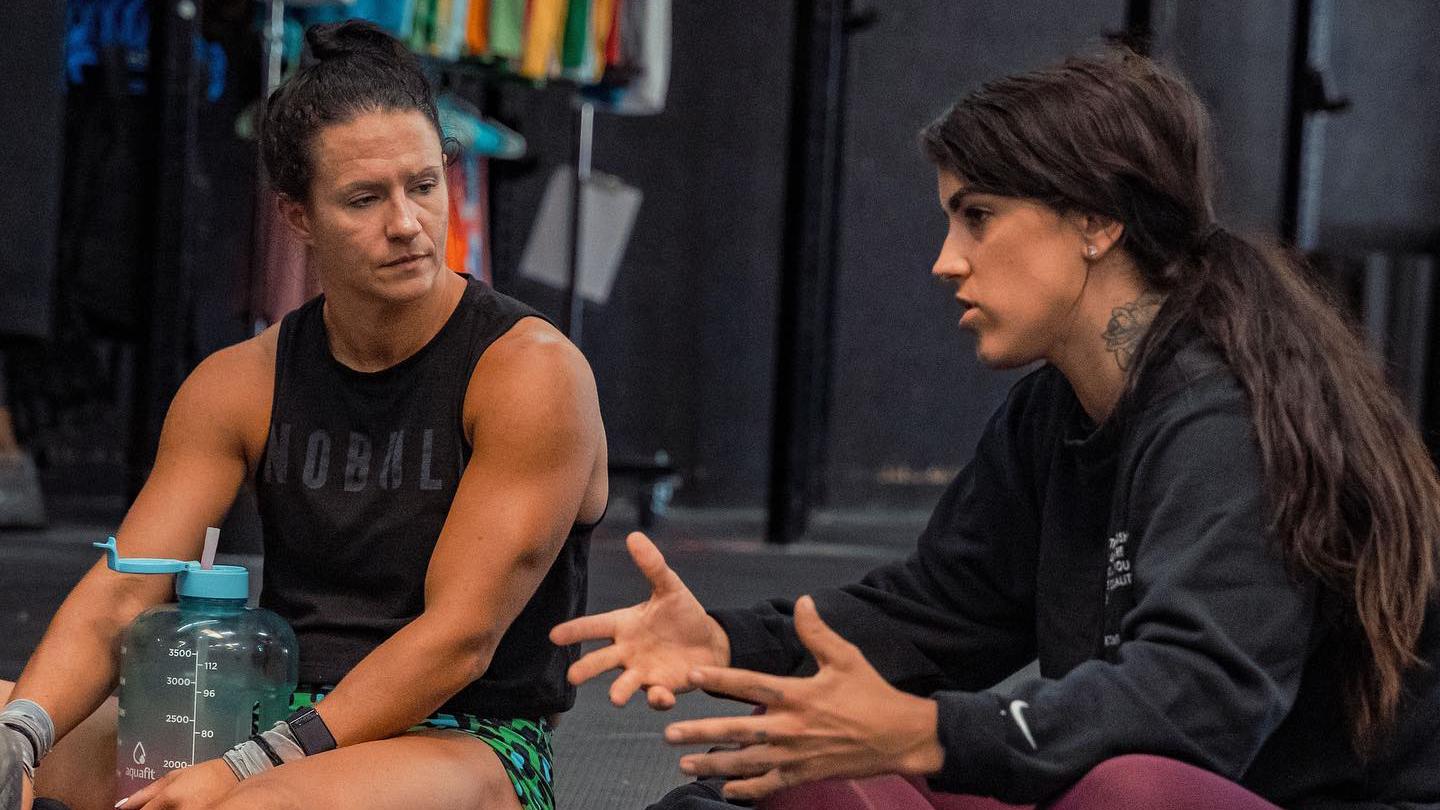
Photo Credit: Tracy Tucker (@ tracytucker_ttt)
Enjoying Morning Chalk Up? Access additional exclusive interviews, analyses, and stories with an Rx membership.
From the Paleo Challenge to the Whole Life Challenge, short-term—often in the neighborhood of six weeks—challenges have been part of the CrossFit community since the early days.
But the latest school of thought says we have been doing it all wrong.
Case in point: Earlier this month, Training Think Tank’s Nutrition Coach Tracy Tucker wrote the article: 2023 Challenge: Do Not Do Another Nutrition Challenge.
The argument: The long and the short of it is that nutrition challenges generally have a start and end date and ultimately promote short, rather than long-term success. They’re generally based on depriving oneself of certain foods during the time of the challenge, before returning to what was, as there’s often nowhere to go after the challenge.
- Further, as Broxterman pointed out, from a business standpoint, challenges might create but a small bump in business revenue for one month (often for a whole lot of work), and then just like the client, it’s return to what was for the business: zero nutrition revenue.
What to do Instead?
Tucker and Broxterman, the owner of Prosper Nutrition Coaching, say what works a whole lot better than the classic six-week nutrition challenge is developing an ongoing nutrition coaching program at your gym. It’s better for the client and better for the business, they say.
Four Keys to Building an Ongoing Nutrition Program
One-on-One Coaching
“Anyone who knows me knows I’m a big fan of individualized coaching. I just haven’t seen enough group nutrition coaching programs to do it right to be a believer,” Tucker said. “I love the effort behind them and the intention to get people motivated, but I’m much more into helping coaches make an impact on their clients and deliver quality coaching.”
Broxterman, too, is a major proponent of one-on-one coaching, as it allows you to dig into the client’s mindset, relationship with food, and what might be holding them back, something that’s impossible to do in a group or six-week challenge type of environment, she explained.
In light of this, Broxterman teaches the coaches she trains how to be client-centric coaches that focus on motivational interviewing—meaning asking questions to help clients figure out their goals, motivators and obstacles in the context of their daily lives. Doing so, she said, makes a huge difference in helping the client feel both supported and in control of the direction of their journey, and ultimately more capable of making “small but steady, long-term” changes, she explained.
Invest in Your Coaches
You may think you can do it alone, but one-on-one nutrition coaching can quickly become time-consuming, so you will likely need another coach, or coaches, on board, as well, Tucker explained.
“The more of your people that are educated, the better decisions they can make and the more integrity they can have,” Tucker said. “If you want your coaches to step up to the plate and take on nutrition clients, support them and make sure they are equipped and qualified to do so.”
This is at the heart of Broxterman’s Prosper Nutrition Coaching program: It provides education so a gym owner and their coach or coaches can all go through the same training, ensuring everyone on the team is on board and consistent in the way they’re going to coach their nutrition clients. Not only does this mean clients will be better served, but also, of course, it provides more revenue opportunities, both for the business and the individual coach.
Don’t Sell A Hack Job Program
It can be tempting to simply wing it and start offering one-on-one coaching without much of a plan in place, but Tucker warns for long-term success it’s incredibly important that your message, and your services, are well thought out.
First, “determine what your core values around nutrition are. You may have never thought about your food vocabulary, or even how you speak of food, sounds to others. So create something like one to three virtues that support your philosophies around food and health so that when you hire coaches or put out programs, they are in alignment with what your gym represents,” Tucker said.
Similarly, when it comes to deciding what you’re going to offer, it’s important to come up with a formal plan that includes things such as how often, and how, you will meet and communicate with your clients, as well as the types of services that will become the foundation of your program.
“You should know this probably will change in time as your business evolves, but don’t go changing it every week. Give your attempts an honest shot and make slow, sustainable changes over time,” she said.
Broxterman added: There are tons of ways you can design your program, so the key is determining what’s best for your business, and then being consistent with it.
“This is why we have one-on-one mentoring calls (with coaches in the program) so we can teach best practices and then help the gym owner and head nutrition coach customize everything to their specific box,” Broxterman said.
“Some people really like having a template to follow, and others really appreciate the flexibility and help in making this fit their current business needs,” she added.
Charge Enough Money
Nobody expects one-on-one coaching to be cheap, nor should it be, so it’s important to charge what you’re worth.
And while it depends on the service you offer, especially on how much one-on-one coaching you’re doing, Broxterman considers $100 to $250 a month to be the low to medium range of what you could be charging, but “you can also go high ticket” and charge considerably more, she explained.
One of Broxterman’s clients, Zach Lewandowski, for example, is currently generating $13,000 in ongoing revenue from 33 nutrition clients, some of whom are higher ticket clients who paid close to $3,000 for their initial onboarding process.
“The sky’s the limit,” she said. Right now, for example, she is running a high-ticket program that brought in 20 people and generated $43,000 in revenue.
“And I have seen gyms run programs at $499 to $999 and even higher each month. But it needs to be high touch, and the coach needs to have the skill level to deliver the value at that price point,” she added.
The Bottom Line
If you’re not offering ongoing nutrition coaching, you’re not only leaving money on the table, but you’re also doing a disservice to your clients.
When it comes to nutrition coaching, “the business can easily boost their profit without a major investment or cost incurred. Nutrition coaching has an incredible return on investment compared to fitness coaching. High margins, few expenses,” Broxterman said, adding that it also allows coaches to have a higher hourly wage without “burning themselves out.”
“You know that old saying, ‘Your abs are made in the kitchen?’ It’s not wrong. So why not give your new member more results than they were looking for by having them not only start to move more, but also focus on what they are eating?” Tucker said.
Most importantly, “Client results will be way better,” Broxterman added.
Get the Newsletter
For a daily digest of all things CrossFit. Community, Competitions, Athletes, Tips, Recipes, Deals and more.
“*” indicates required fields









